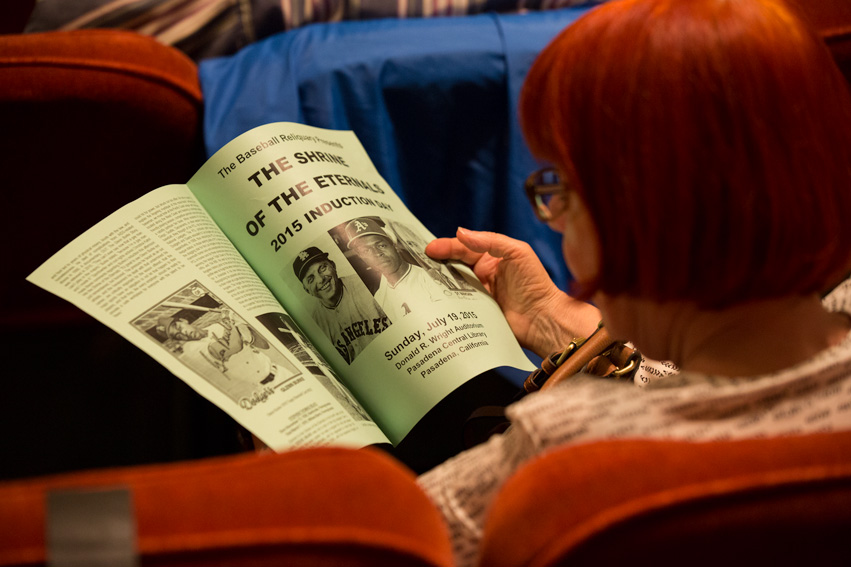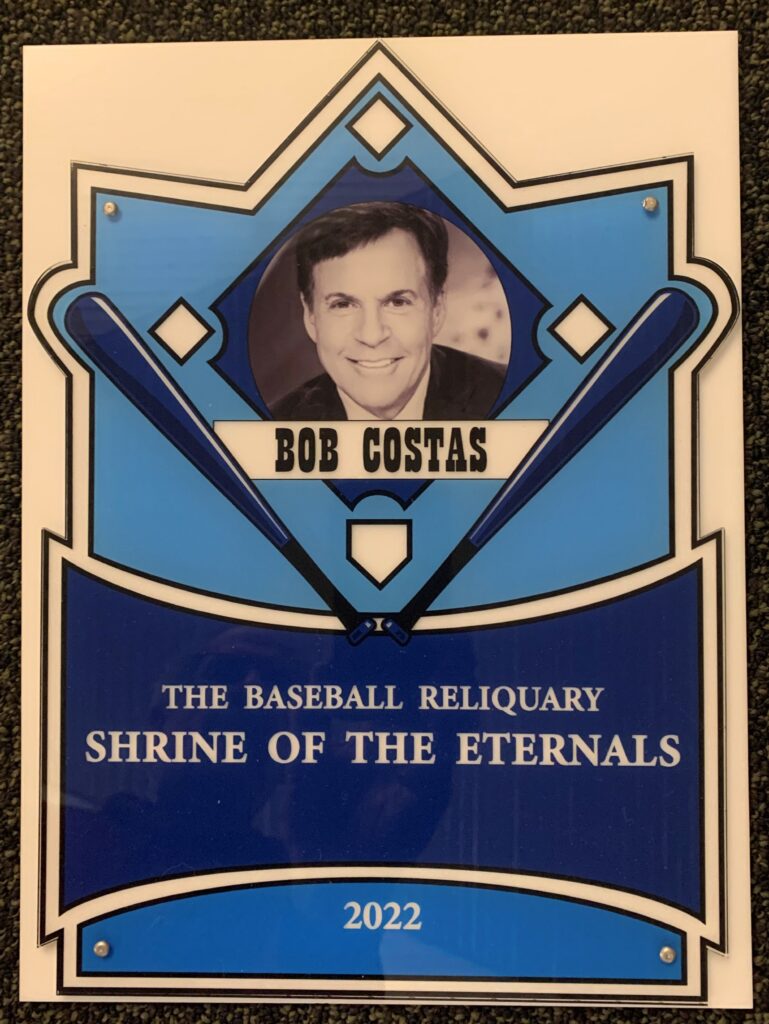Commissioned by the Baseball Reliquary, this icon painting depicts Jackie Robinson, who in 1947 became the first black man to play major league baseball in the 20th century. Until his death in 1972, Robinson, along with Rev. Martin Luther King, Jr., was committed to the campaign for nonviolent resistance against racial oppression and injustice in the United States.
In their book Diamonds in the Rough: The Untold History of Baseball, authors Joel Zoss and John Bowman remark that Robinson’s “debut was the most widely commented upon episode in American race relations of the century — in some ways even more explosive than the assassination of Martin Luther King, Jr., or the struggle for desegregation — for it marked a cooperative attempt to elevate the American creed of liberty, equality, and justice for all above the time-honored American tradition of social and economic discrimination. And it happened in baseball where, above all, Jackie Robinson’s turn at the plate personfied the hope that amidst the reality of inequality, the American Dream really could encompass everyone regardless of race.”
Artist Michael Guccione’s depiction of Jackie Robinson as a 20th century saint is surprising only because we do not typically think of him in this context. Yet Robinson certainly belongs in a modern gallery of saints in the sense that an understanding of his struggles may help us find meaning in our own lives. Robinson’s oft-repeated quote, “A life is not important, except in the impact it has on other lives,” challenges us to change ourselves and our world. Only the image of those who have themselves bridged equally wide fissures in the past can give us the sight, the hope, the courage that it will take.
Michael Guccione, who spent two years working on the icon and completed it on New Year’s Day of 2001, provides further insight into his unique rendering and effort to move sainthood into the real world:
“In taking on this commission for the Baseball Reliquary, they suggested the likeness of Jackie Robinson be rendered in the tradition of the classic icons of the Eastern Orthodox church, whose potrayals of saints and deities take on the devotional aspect of worship and adoration. While I liked the idea of painting a devotional piece of a baseball player as a saint, I made no attempt at mimicking the past masters’ techniques or styles, relying instead on a more illustrative/illuminative approach in compliance with my own preferences and abilities. Hopefully the piece would reflect a similar impact that the great icons had, and continue to have, on their audience, that of evoking a meditative inner acknowledgment of the achievements, contributions, and sacrifices of these religious devotees.
“I wanted to incorporate an emblem into the composition, as the saints commonly have emblems or trademarks by which they are associated and identified. I also decided to integrate the emblem into the nimbus or halo of the subject. The emblem is very much like a team’s mascot, chosen for some relevant trait or feature. Sebastian’s became the arrow after being showered by them during his act of faith, and not surprisingly he is known as the ‘holy pincushion.’ Somewhere in the history of this ballplayer would be an appropriate emblem.
“For the last ten years or so, the saints have been in vogue by believers and heathens alike. While this rediscovered interest has focused largely on the martyrdom of the saints with all of its monumental pain, suffering, and bizarre acts of self-denial, what is lacking is a recognition of the saints’ unfaltering devotion to a belief, to which all else is secondary. This would be especially true in Jackie Robinson’s case, whose belief transcended the diamond and extended into the lunch counters and schools of baseball’s home country.”





